Full Guide To Moonstone vs. Opal (This Is The Difference)
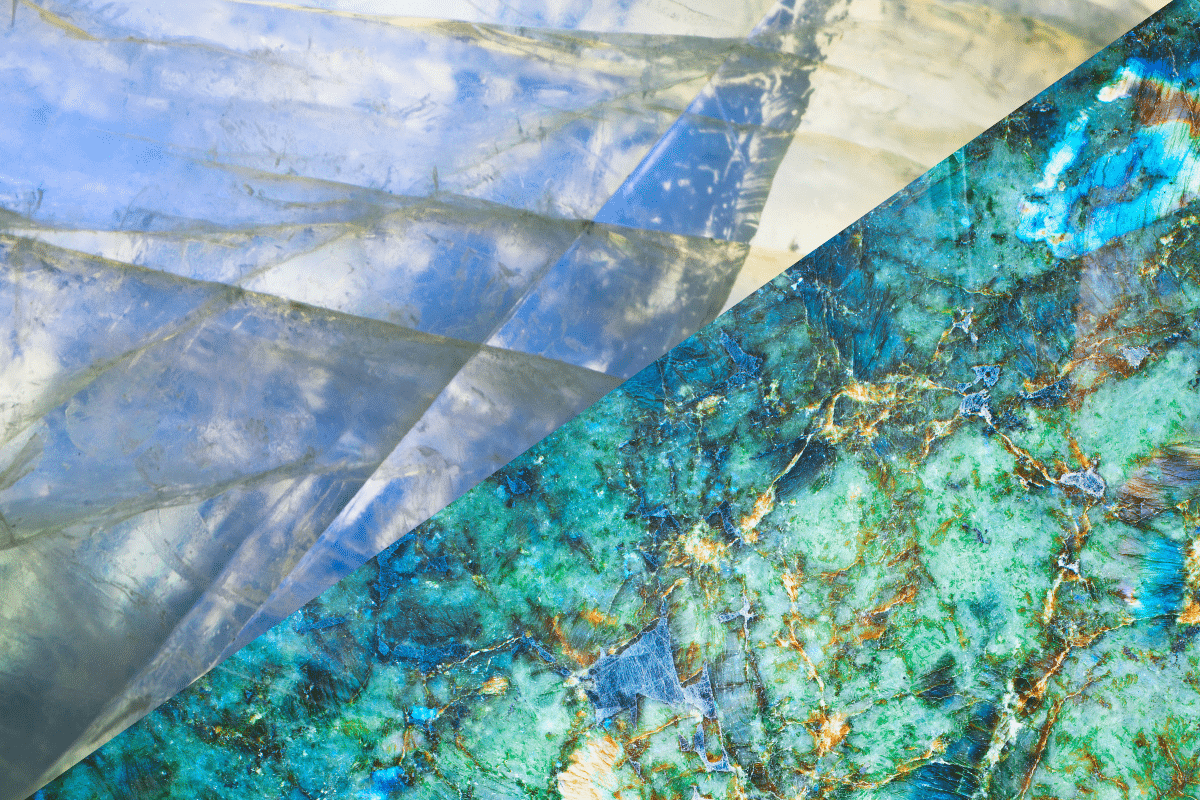
In order to work with our crystals effectively, we need to understand their properties. With crystals that look similar or have similar uses, such as moonstone and opal, it can be difficult to determine which one to work with. The answer should always be; the one that you are drawn to the most. However, if you are looking to find the difference in physical appearance as well as metaphysical properties, you’ll find your answer here. In short;
Opal has vibrant specs of color, whereas moonstone has a more iridescent sheen. Additionally, opal is slightly softer than moonstone, making them more likely to break or chip, but they are also seen as more desirable. Moonstone is generally associated with wisdom and spirituality, whereas opal is with love and passion.
Continue reading if you want to know more about the (physical) qualities of these stones, as well as how you can use them in your spiritual practice.
Want more help or information? If you have any more questions after reading this blog post or want a personal answer for your specific situation, join the free Facebook group! We promise you’ll get an answer from either our team members or a community member.
Moonstone vs. Opal – How To Tell The Difference?
In order to understand the difference between these two stones, we can look at the color, shape, pattern, clarity, and more. Below we’ll describe all these aspects in detail.
Chemical Composition
Both moonstone and opal are silicates. Moonstone is a silicate that contains aluminum, sodium, and potassium in its chemical formula. Moonstone is also a member of the feldspar group of minerals.
On the other hand, opals are amorphous, hydrated forms of silica. Amorphous refers to the fact that these minerals do not have an identifiable shape.
Interestingly, opal’s composition also has a significant portion of water in it; 6-10%, depending on its weight.
Color
Opals have a spectacular color, making them more desirable than moonstones when used in jewelry. For this reason, opals are more valuable than moonstones.
Granted, both stones look pretty similar, but the moonstone crystal is subtle in color with a glowing effect known as adularescence. The effect gives the stone a glowing luster and is created when the feldspar minerals within the stone are reflected on by light. It gives an illusion of moonbeams traveling upon the water, which is where this stone receives its name from. To enhance this effect, moonstones are only cut by professionals and faceted to hide the impurities within the stone.
Artificial enhancements to improve color are generally not done on moonstones because their natural hue is to be desired. The variety of colors for moonstones includes gray, yellow, green, brown, black, and rainbow.
On the other hand, opals are more vibrant and flashing effects of color. When observed under a lightsource, opals will depict a prism of color due to the reaction of light to the stone’s chemical structure. The stone will also show different hues when observed at different angles under the light. The stones’ color variety includes green, blue, red, orange, white, and black.

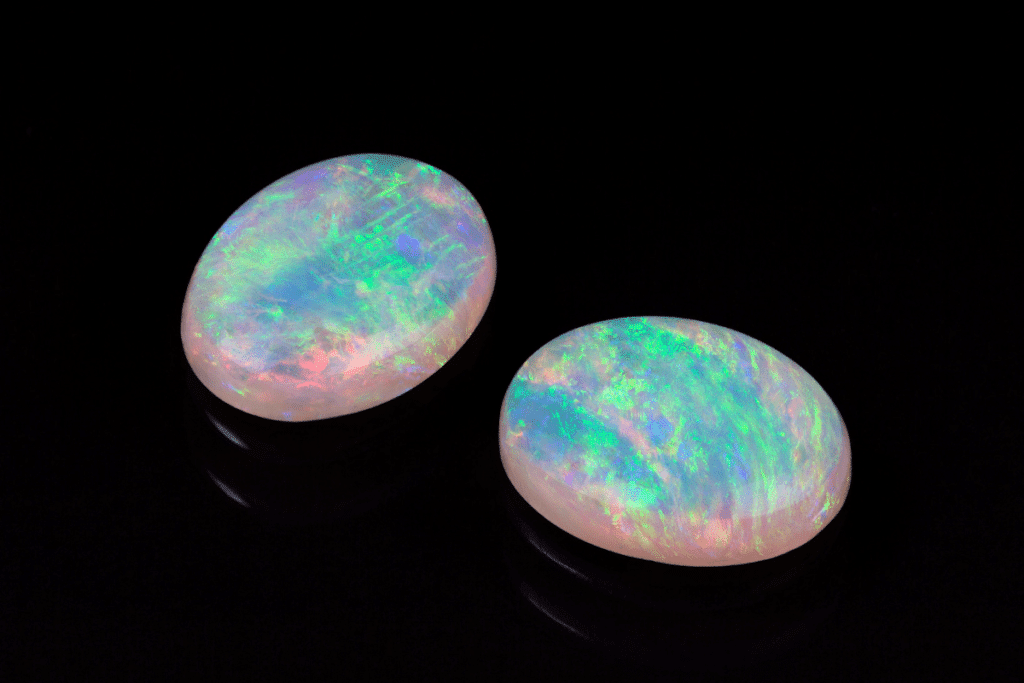
Pattern and Clarity
The clarity of moonstones can be semi-transparent or translucent. Generally, moonstones with fewer inclusions are more valuable. This is because they can alter the adularescence effect and the transparency of the stone. The most common inclusions seen on a moonstone resemble a centipede.
Opals are interesting gemstones, as every one of uniquely shaped and colored. There are many varieties, each named after the substance they resemble, i.e., jelly opals and fire opals.
To display their hues, opals are cut and shaped according to the patterns on the surface and the play of color. Opals show their beauty best in well-rounded cabochon cuts rather than faceted ones.
Opals are valuable, whether opaque or translucent. However, too many blemishes or fractures on an opal will reduce its quality significantly.
Hardness
Moonstones are slightly harder stones compared to opals. Moonstones rate 6- 6.5 while opals score 5.5 – 6.5 on the Mohs scale. If you’re unfamiliar, the Mohs scale of hardness determines a stone’s hardness by measuring how scratch-resistant it is. According to this scale, a stone can scratch any other mineral with a lower score. For reference, talc is a 1, whereas diamond is a 10.
Both minerals are relatively durable, but still susceptible to breakage and damage. The stones’ durability depends on the maintenance and treatments done on them. When either of these stones is used for jewelry, they should be placed in a protective setting because they are fragile.
Care
All gemstones, irrespective of type, require care, especially if used regularly. Both stones can be cleaned with a damp cloth. However, because both stones are soft, immersing in water should be avoided. Opals are notorious for damage and losing their moisture and luster. Baby and natural oils can be applied to the opal to restore its luster after cleaning. Harsh chemicals and extreme temperatures should be avoided.
Both moonstones and opals can be energetically recharged and activated by the light of a full moon, or by placing them on clear quartz or selenite.
Location
The finest moonstones are naturally found in Sri Lanka. The rainbow variety is also found in Madagascar and India. The first opal artifacts originated from Ethiopia. These stones can also be found in Indonesia and Brazil.
Properties
Moonstones are believed to capture all the moon’s feminine energies and are symbolic of new beginnings. Moonstones are associated with divine wisdom and are an instrumental tool used as a link to spiritual realms as well as enhancing psychic abilities. Moonstones are also common in spiritual healing and a good amulet for luck and love.
Moonstones were regarded as the stone of peace and tranquility in most ancient cultures. The adularescence effect on the stone was also thought to bring luck. For the physical body, moonstones are used in treating infertility and hormonal imbalances.
Opals are associated with passion and love. The stones are believed to help process our deepest feelings and get rid of what no longer serves us. Opals will improve and strengthen memory and stimulate creativity and authenticity. Opals are good antidotes for insomnia, depression, and pain. Opals are also thought to help with heart and eye-related illnesses.
Beware that crystals are never a replacement for professional medical help. If you have any issues, see a doctor first.
Ancient lore
Moonstones have gained popularity and have been valued across generations not only for their aesthetic properties but also for their mystical abilities. The Romans and Greeks associated the stone with goddesses Selene, Luna, and Artemis. Moonstone in Hindu mythology was believed to have the ability to trap and hold moonbeams.
Opals have long been used as a symbol of royalty, wealth, and prosperity.
Chakra Association
Moonstones are associated with the solar plexus chakra. This is the chakra that governs self-power and confidence. Gemstones linked to this chakra can be used to balance energies within the body and mind. Opals are used to energize and activate energies in different chakras, depending on their color. Opals will also connect all the chakras to the crown chakra for intense healing.
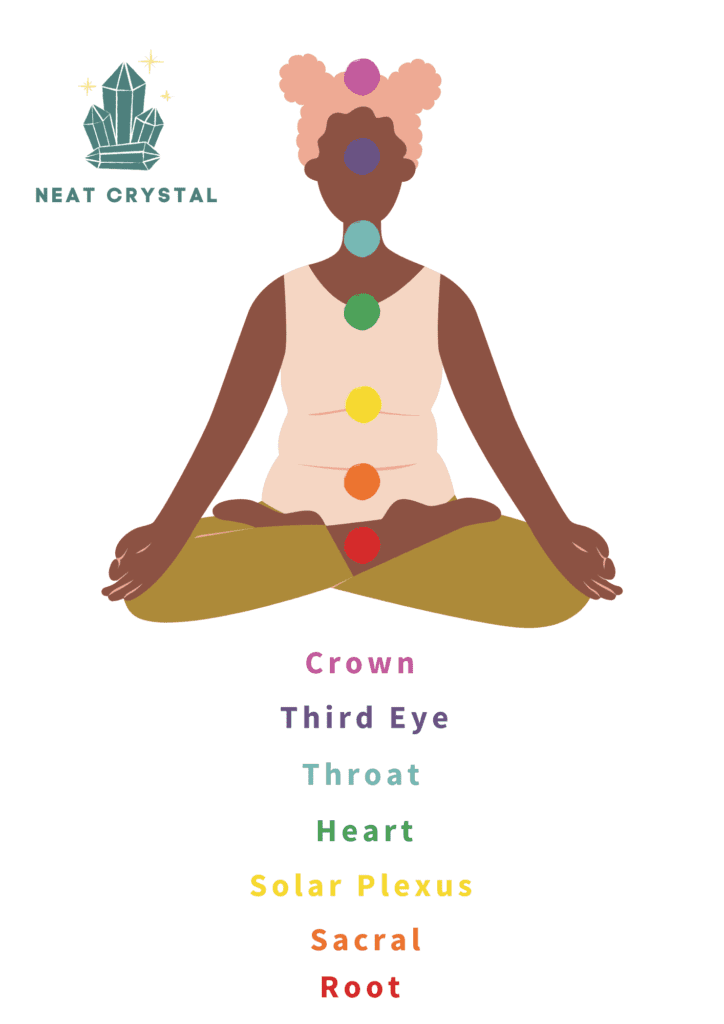
Chakras are the different energy points in our body. There are 7, each of them linked to a certain aspect of our lives. We can link each chakra to crystals or gemstones by color.
- Root chakra (Muladhara)- is represented by black/red and is located at the base of the spine. This chakra is related to stability.
- Sacral Chakra (Svadihsthana/ spleen)- is represented by orange and is located below the navel. The sacral chakra is associated with feelings.
- Solar Plexus Chakra (Manipura)- is represented by yellow and is located above the naval. The solar plexus chakra is related to intellect.
- Heart Chakra (Anahata)- is represented by green/pink and is located in the chest area. This chakra is associated with loving and emotional healing.
- Throat Chakra (Vishuddha)- Is represented by blue and is located at the end of the throat. This chakra is associated with communication and tangible dialogues.
- Third Eye Chakra (Ajna)- Is represented by indigo and is located between the eyebrows. The chakra is related to spiritual understanding.
- Crown Chakra (Sahasrara) is represented by white and is seen as our connection to the divine.
Also read: What Chakra Is Moonstone? (Rainbow, Pink, Peach, White, Green, Blue, Black)
Birthstones & Zodiac Association
Moonstones are natural birthstones for June (and thus Geminis and Cancers born in that month), while opals are modern birthstones for October (and so Libra and Scorpio born in that month).
Wearing moonstone jewelry for the associated zodiac signs is believed to transfer the full mystical benefits of the moon to its wearer.




Also read: The Complete Guide To Moonstone And The Zodiac Signs
Opal is an ally to help Cancers forgive and let go of feelings they might be holding for a long time.
Opals help soothe Scorpio’s feelings and let go of frustration and grudges because Scorpios are generally not the quickest people to forgive. Libra benefits from opals because they harness its energies and bring out the best of its strengths.
Element Association
Many cultures have developed the idea of elements to explain nature. In the west, this notion was created by the ancient Greeks and consisted of 4 elements: Earth, Air, Fire, Earth. In India, another element is added: Akasha, representing the foundation of the other elements.
The 4 elements represent the following:
- Earth for personal growth, stability and security
- Water for love, friendships and emotions
- Air for intellect, wisdom and communication
- Fire for energy, passion and action
By looking at a crystal’s or gemstone’s properties, we can determine which element fits best.
Moonstones and opals are associated with the water element. The water element is upheld for its healing and cleansing power. The element is also symbolic of rebirth, change, and purity. Crystals associated with this element can be used to manifest health, relaxation, and stress relief.
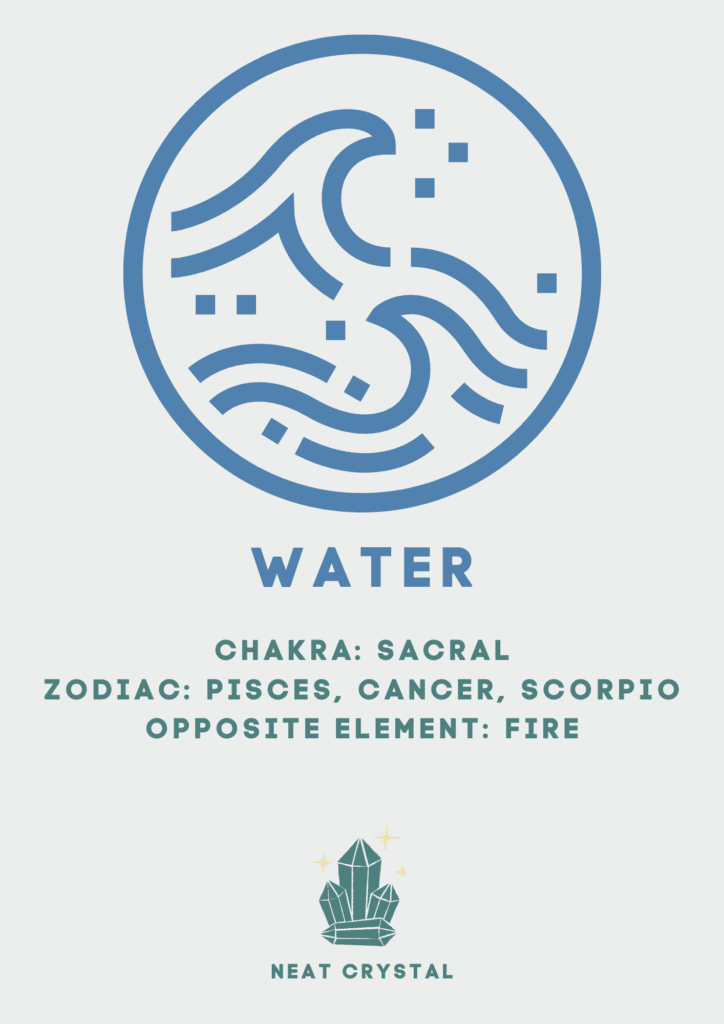
Ruling Planet
Moonstones are ruled over by the moon, while opals are ruled by Venus. The moon governs our inner emotions, intuition, and our relationships with others. Moonstones will help point out habits and subconscious reactions that drive our actions.
Venus, on the other hand, is the planet that symbolizes luxury and love. The planet governs pleasure and affection, especially in relationships. Opals can be used to bring harmony and better communication between you and your partner.
Numerical Vibration
Moonstones vibrate at a frequency of 4. Number 4 in numerology signifies grounding and stability. People resonating with this number are reliable and organized. One of their biggest pitfalls is that they can get stuck in their comfort zone. Moonstones will help ease transitions and embrace change.
Opal vibrations will vary depending on their color. Opals’ main vibrations are 1, 6, and 8.
Number 1 in numerology signifies new creations. People who resonate with this number value independence and are goal-oriented. Opals can be used in bringing mental clarity and focusing energies on growth and accomplishment of goals and desires.
Number 6 mainly represents matters of the heart. The number signifies harmony, love, and empathy. In relationships, opals can be used to bring trust and dependability.
Number 8 is significant both spiritually and materially. Number 8 represents success and abundance. People who resonate with this number are spiritual and often in authority. These people are also susceptible to anger issues and being judgmental towards others. Opals can be used to help them improve in these areas.
Best Combinations
Moonstones and opals can be combined with other stones to amplify their energies.
Moonstone can be paired with rose quartz for emotional balance and love. The pink stone paired with moonstone also awakens psychic abilities.
Moonstone and amethyst are a good pair to tackle insomnia. The pair is effective in eliminating bad dreams and aiding lucid dreams.
Opals come in a variety of colors. The white and black opal variety can be combined to treat depression and boost creativity. This pair can also be used as a link of communication with angelic beings and bring visions of your past life.
Opals can be paired with lapis lazuli to attract fame and success, which comes as a result of heightened intellect and knowledge. The pair can also be used to manifest abundance, prosperity, and luck.

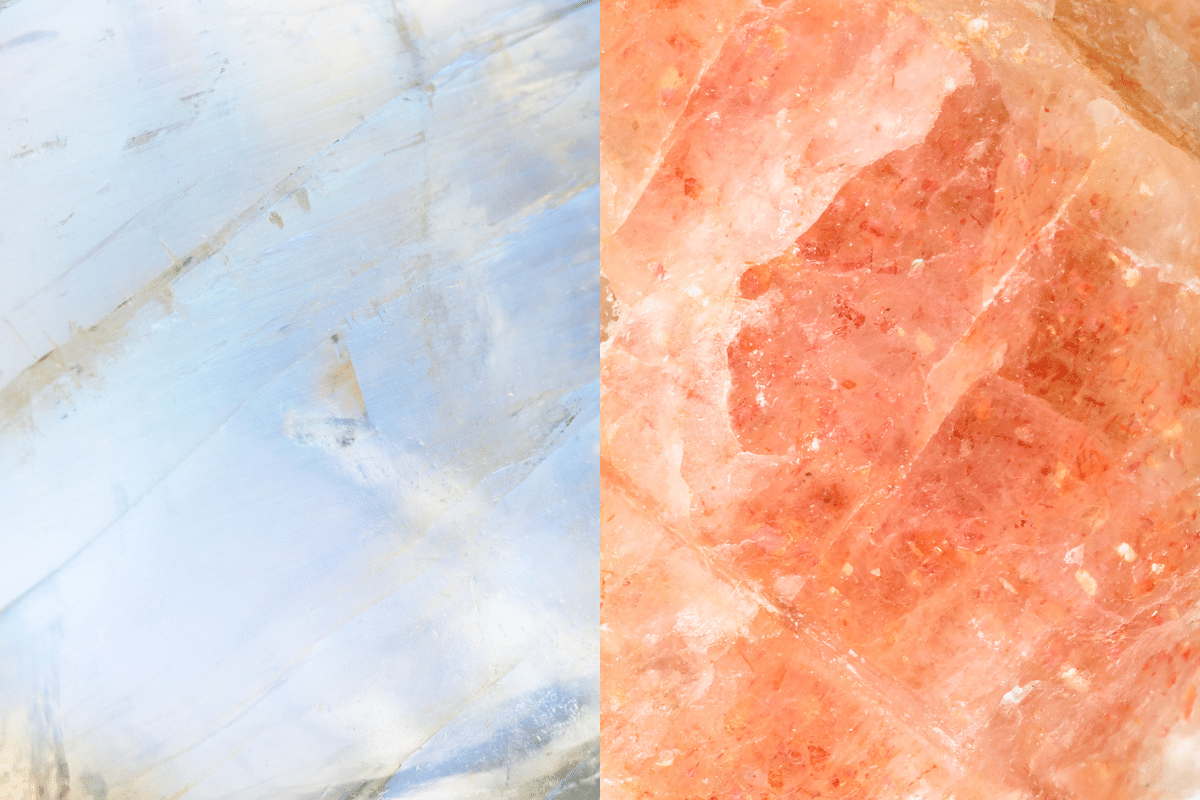

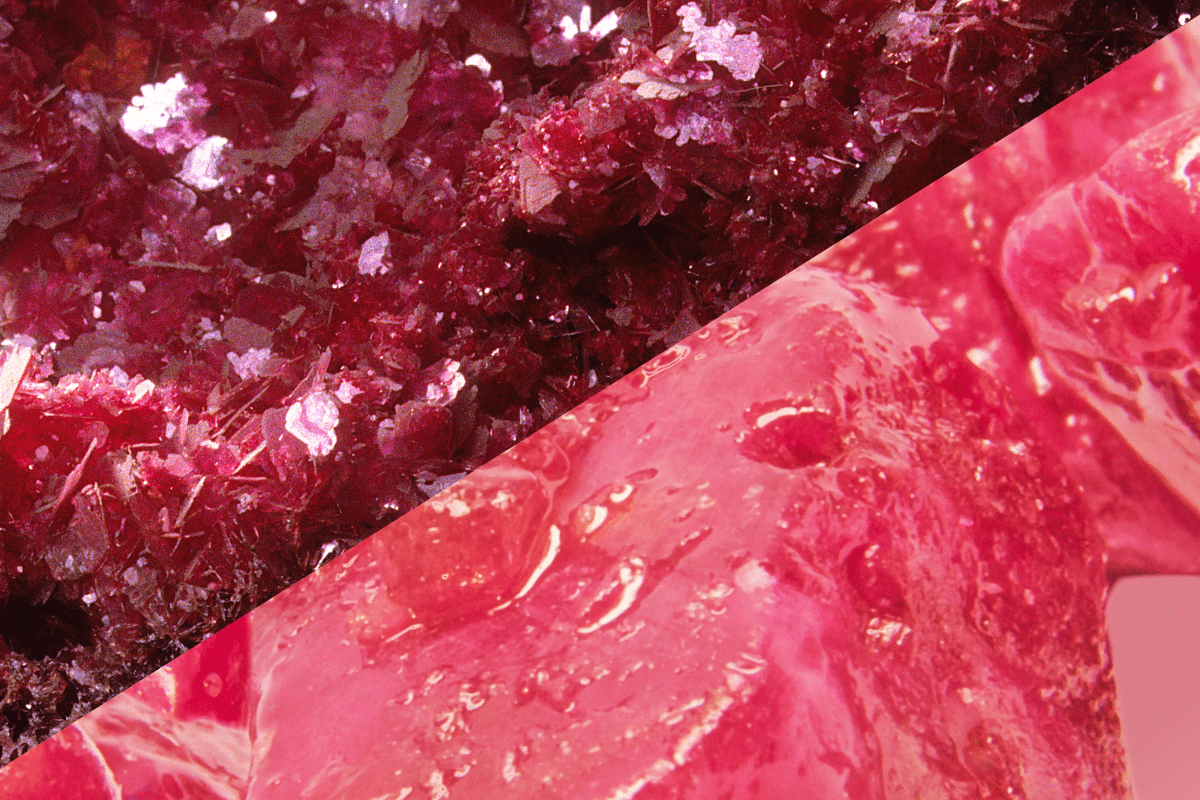
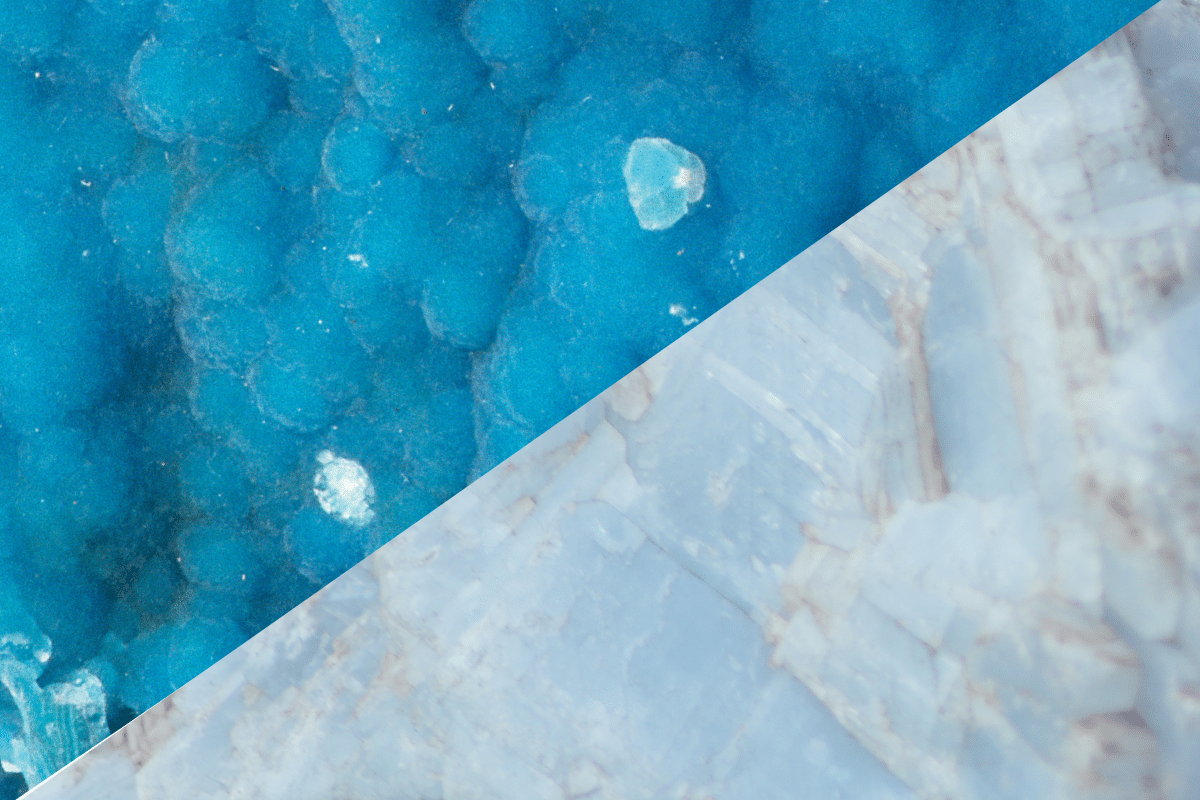
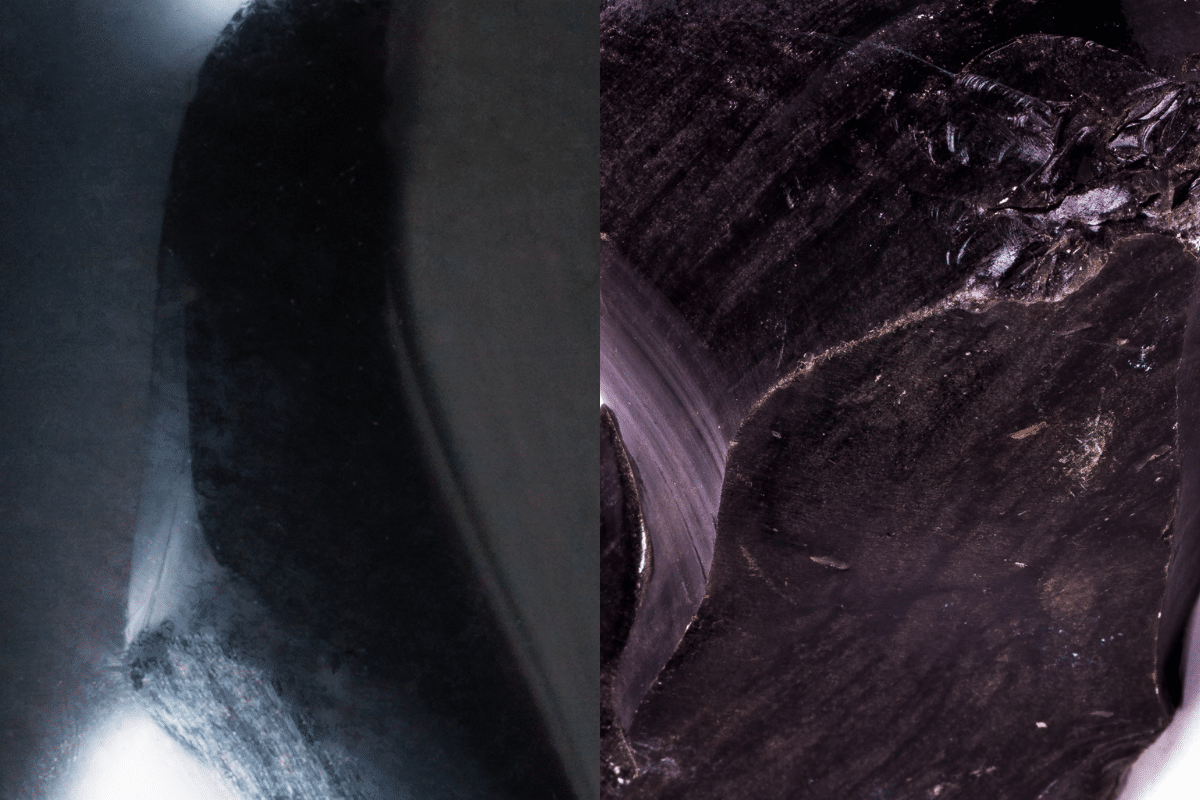

5 Comments